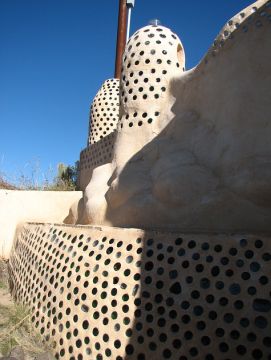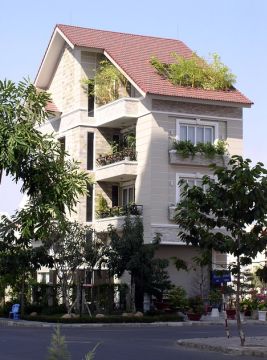Sustainable Architecture – Development, Characteristics and Evolution
Contents
What is Sustainable Architecture?
Sustainable thermal is linked to the concept of sustainable development. It is a way of conceiving architectural design in a sustainable manner, optimizing natural resources and building in such a way that the environmental impact of buildings and their inhabitants is reduced over the environmental impact.
Sustainable architecture is one that values, when designing buildings, the impact that buildings have on nature and society, the efficiency of materials and construction structure and building processes, seeking to promote energy efficiency to avoid generating unnecessary energy expenditure, taking advantage of the resources of their environment.

The principles of sustainable architecture
- Use environmental resources in a sustainable manner, considering the climatic, hydrographic and ecosystem conditions of the environment, obtaining maximum long-term performance with the least impact on the environment.
- Give preference to the needs of the population and future generations.
- To use building materials and natural and cultural variety with efficiency, moderation and creativity, giving preference to those with low energy content.
- Use renewable energy sources, reducing energy consumption, reducing energy expenditure, both in the phases of design, construction, use and end of life.
- Emphasize diversity, complementarity, using local and regional means, opposing the values of centralization and homogenization.
- Create spaces that are healthy, economically viable and that meet social needs, complying with the requirements of hygrothermal comfort, health, lighting and habitability of buildings.
Techniques to reduce the energy needs of buildings
Efficient heating
In sustainable architecture we use building materials that accumulate heat in their thermal mass, such as concrete, bricks, stone, cement floor, we will use thermal insulation to conserve heat, build compact buildings, through walls, low ceilings and double glazed windows with airtight glazing.
Efficient cooling
Protect glazed surfaces from the sun, do not use glazing on roofs, insulate walls, roofs and glazing so that cooling from air conditioners is not lost and ventilate buildings during the night when the temperature is lower.
Passive cooling
Especially in very hot climates, it is necessary to use building materials with high thermal mass, thick walls and roofs, ventilating at night to maintain cool temperatures during the day.
Alternative energies in buildings
These involve the use of active solar devices such as photovoltaic panels or wind generators that provide sustainable electricity, active solar water heating systems, renewable sources such as solar thermal or biomass, and geothermal.
Sustainable skyscrapers
Respecting the environment, green and sustainable architecture by building vertically, with self-sufficient buildings with renewable and non-polluting energy.
Energy recycling
In sustainable architecture, much thought is given to giving a new sustainable life cycle to an existing building instead of building a new one.

Concepts that make up sustainable architecture
Environmental
Respecting the environment, knowing the climate where the project will be located, using materials that are easy to recycle without hazardous or polluting products, saving raw materials and energy, designing in an austere and simple way using fewer natural resources, using local materials, using renewable energies and closed water and waste circuits, reducing emissions to the environment, choosing suppliers with environmental certificates with low environmental impact and reducing waste throughout the construction process.
Social
Use local materials, follow hygiene and safety programs at the construction site, instruct personnel with courses on the company’s environmental policy and on the durability of tools and work and safety elements, choose the chemicals used in cleaning and volatile organic compounds so that they do not cause respiratory diseases, promote the reuse and recycling of materials both at the construction site and in the office and provide information to users on good environmental practices, and guarantee labor insurance.
Economic
Reuse and recycle materials for several works, having the least amount of waste, use prefabricated systems, produce in series, use durable materials with low maintenance, be efficient with the choice and combination of materials for energy savings, use renewable technologies that will compensate in the long run, design the project so that there are no unused surfaces that will generate useless expenses, use appropriate strategies that will achieve energy savings, use suppliers, receivers and producers that deal with waste and finally obtain an Environmental Certification, having a good and quality publicity in the market.
